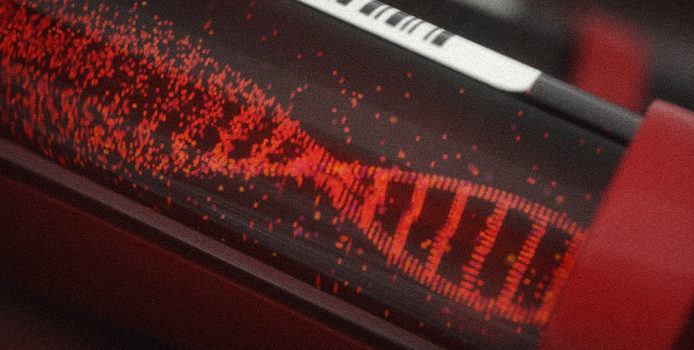

Biopsy-Free Analysis of Brain Cancer
by Achal S. Achrol
A recently published paper by Pacific Neuroscience Institute researchers suggests a promising new approach for a biopsy-free method to identify primary brain tumor genetics for personalized treatment options.
Glioblastoma and other primary brain tumors (PBTs) are generally considered to be aggressive with very limited therapeutic options. Initial diagnosis is performed after surgically removing the tumor tissue for pathology analyses. With advanced technologies including genomic brain tumor sequencing, the genetic make up of the tumor may be determined to provide insights that can aid in selection of targeted therapies to better attack remaining tumor cells that drive resistance and risk of recurrence.
Because tumor cells evolve in response to therapies, the data obtained from initial analysis of the surgical tumor tissue is limited in its ability to track actionable genomic alterations in the tumor over time. This drawback has limited the development of and enrollment into genomically-matched clinical trials (also known as personalized medicine) in PBT oncology treatment.
Cell-free circulating tumor DNA (ctDNA) represents a new type of tumor biomarker that can be detected in the blood and cerebral spinal fluid (CSF). As such, ctDNA represents a unique and novel, biopsy-free alternative for comprehensive genomic profiling over time in advanced solid tumors.
To investigate ctDNA presence in PBTs, Pacific Neuroscience Institute investigators Achal Singh Achrol, MD, and Santosh Kesari, MD, PhD, along with collaborating colleagues, analyzed the genomic results from over 400 patients with PBTs undergoing ctDNA Next-Generation Sequencing (NGS) analysis with a highly sensitive and specific clinical assay.
Among the most significant findings of this large analysis was that genomic alterations in ctDNA, including single nucleotide variants and gene amplifications, were noted in half of the studied patients, a much higher yield than previously reported.
Researchers were able to find matched FDA approved targeted therapies and clinical trial options for almost 50% of patients where genomic alterations were identified with detectable ctDNA. This created the ability for the first time to implement personalized medicine decision-making in response to tumor evolution over time.
In conclusion, this study presents a promising new approach for a biopsy-free method to identify and assess genomic signatures and evolution in PBTs in response to treatment over time, which may provide more options to further explore genomically matched personalized medicine clinical trials.
Publication in CNS Oncology, 11 Mar 2019 | Analysis of cell-free circulating tumor DNA in 419 patients with glioblastoma and other primary brain tumors
David E Piccioni, Achal Singh Achrol, Lesli A Kiedrowski, Kimberly C Banks, Najee Boucher, Garni Barkhoudarian, Daniel F Kelly, Tiffany Juarez, Richard B Lanman, Victoria M Raymond, Minhdan Nguyen, Judy D Truong, Annie Heng, Jaya Gill, Marlon Saria, Sandeep C Pingle & Santosh Kesari
For more information, contact the Glioma Program offices at 310-582-7099.

Achal Singh Achrol, MD, is the Director of Neurovascular Surgery and Neurosurgery Clinical Trials Program at the Pacific Neuroscience Institute and Chief of the Glioma Surgery Program at the Saint John’s Cancer Institute at Providence Saint John’s Health Center. He specializes in computer-assisted minimally invasive keyhole and microvascular neurosurgery, using advanced neuroimaging and stereotactic navigation techniques to safely reach even the most difficult lesions.
About the Author

Achal S. Achrol
Achal Singh Achrol, MD, is the Director of Neurovascular Surgery and Neurosurgery Clinical Trials Program at the Pacific Neuroscience Institute and Chief of the Glioma Surgery Program at the Saint John’s Cancer Institute at Providence Saint John’s Health Center. He specializes in computer-assisted minimally invasive keyhole and microvascular neurosurgery, using advanced neuroimaging and stereotactic navigation techniques to safely reach even the most difficult lesions.
Last updated: April 10th, 2019